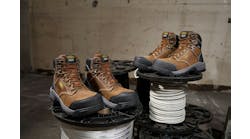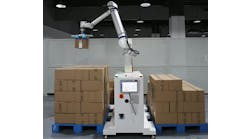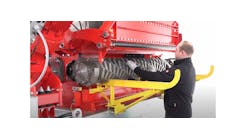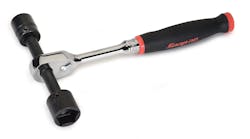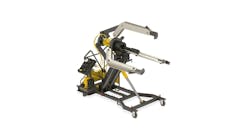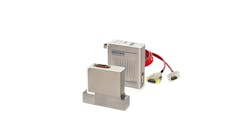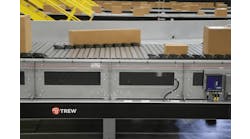Q: I am trying to substitute 7050 T7452 hand forgings for components made of 4-in. thick 2024 T351 rolled plate. The forgings can be produced for half the price of the rolled plate, which takes 9 months to obtain from the mills. Can you help me to provide our client with all available information to obtain FAA approval to allow the substitution of ultrasonic tested aluminum hand forgings for rolled aluminum plate?
A: Rolled plate has good and bad characteristics versus forgings. First, the thickness control usually is better and the surface finish usually is quite good and flat. However, much depends on the rolling reductions versus forging reductions. Remember that rolling works on the surface and sub-surface metal and the center material is more or less elongated in tension-especially in thick plates like those you described. This means that any porosity that remains from the ingot shrinkage tends to elongate and not heal up fully heal.
By contrast, open die forging of ingots to slabs tends to work the centers and heal up any shrinkages that remain there. The center material is actually compressed during its elongation. Thus, the center quality of forged thick plate usually is superior in short transverse properties than that of rolled thick plate. Transverse properties are generally similar as are longitudinal properties.
Roll diameter can make a difference, too, in the case of rolled plate. The larger-diameter rolls combined with adequate per pass reductions will develop better center quality than small diameter rolls with light reductions. I am not sure where you can find a good reference on these issues. They are based on my own experience in testing both rolled and forged plates.
Another issue that you might run into with (thick) rolled plates involves ultrasonic test inspection. Forged plates are usually more transparent (reduced loss of back of reflection) than rolled plates due to the microporosities that typically are healed up on forged plates. This also means that small intermetallic defects are more visible in forged plates since the ultrasonic test is not compromised by the loss of back reflections more typical of rolled plate. Evaluations of UT "flaws" is important to learn if they are small inclusions or unhealed porosity. Some destructive testing may be needed to determine the UT characteristics if you do not have past experiences to help in your evaluation of indications.
In summary, while porosity in hand forgings has a better chance to heal up with compression, they are also usually more transparent during ultrasonic scanning, and minor imperfections that may slip through undetected with rolled plate are more pronounced and detectable when checking forgings.
I am not convinced that you can substitute 7050 for 2024, or vice versa, in the manner you describe. That would take some other testing to verify beyond the differences due to the forming process. True, the 7050 grade is basically stronger than 2024, but it may also be more prone to stress corrosion problems unless properly coated.
H. James Henning answers forgers' technical and operational questions. For more than 40 years he held key technical positions in the forging industry, most recently as director of technology for the Forging Industry Association. He is president of Henning Education Services, Columbus, OH, specializing in customized education and training in forging technologies.
Send questions to ASK JIMc/o FORGING1300 E. 9th St.Cleveland, OH 44114-1503 Or e-mail: [email protected]